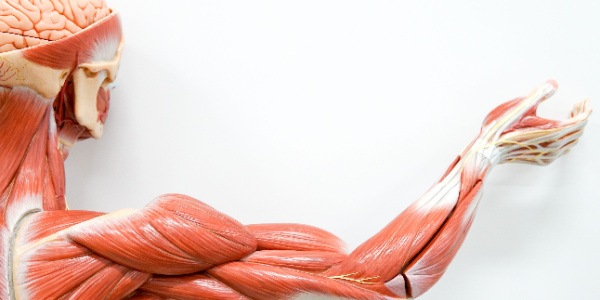Menopause brings about a number of changes that can affect a woman’s quality of life. In fact, menopause causes the ovarian to stop the production of estrogen, along with a deterioration in muscle function and a decrease in muscle mass. After menopause, the risk of metabolic diseases also increases. Although a healthy lifestyle does not increase the amount of estrogen in circulation, it does reduce the risks associated with it.
How Estrogen Affects Muscle Cells
Well-known symptoms of menopause include hot flashes, mood swings and other unpleasant symptoms. However, the consequences of menopausal deprivation of estrogen production are more profound than is commonly thought. Menopause accelerates the aging changes in many tissues, perhaps the best known and best studied of which is osteoporosis. The effects of estrogen on skeletal muscle are less well known. A study from the University of Jyväskylä found that estrogen acts as an upstream regulator of energy metabolism and muscle cell viability.
A total of 24 pre- and postmenopausal women participated in this muscle research on middle-aged women. By using a proteomics approach to study the protein content of the muscle and taking into account the participants’ age, menopausal status and use of estrogen-containing hormone therapy, the researchers were able to identify 1,353 proteins and quantify 762 of them. A total of 137 of the proteins were first implicated in skeletal muscle aging.
The results help to understand why women’s muscles shrink and their muscle strength decreases during menopause. Skeletal muscle is important for metabolism throughout the body. Therefore, these results are important when it comes to combating the increased risk of age-related metabolic diseases.
Number of Capillaries in Muscle Important
A study by the Department of Nutrition, Exercise and Sport at the University of Copenhagen shows that the formation of small blood vessels in muscle tissue is impaired in postmenopausal women. The results of the study underscore the importance of physical activity for women before and during menopause to prevent the development of diseases later in life.
The risk of developing cardiovascular disease generally increases with age. Women have a lower risk of cardiovascular disease than men for most of their lives, but the picture changes once menopause sets in. The exact reason has not yet been fully clarified. Research has found that postmenopausal women have a significantly reduced ability to form tiny blood vessels called capillaries in their muscles compared to younger women. The study showed that older women were unable to increase the number of capillaries in skeletal muscle tissue after an 8-week period of spinning on bicycles, in contrast to what had previously been shown in both younger and older men.
Capillaries are important for health as they are needed for the absorption of sugar and fat into the muscles. Capillary loss can also affect insulin resistance and contribute to the development of type 2 diabetes. Despite the lack of capillary growth, after eight weeks of spinning, the women’s health improved in a number of other ways, including general fitness.
The study supports the idea that premenopausal women benefit from being physically active while their estrogen levels are high. It gives them a better physical starting point when they enter menopause. A sufficient number of capillaries in the muscle is important for muscle function and reduces the risk of developing type 2 diabetes.
Physical Activity is Crucial to Maintain Muscle Mass
Another large study of middle-aged women at the University of Jyväskylä shows that age-related changes in skeletal muscle are commonplace for women in their fifties. The loss of estrogen affects the muscles and leads to a decrease in muscle mass. Physical activity in all its forms can help to maintain lean muscle mass at midlife.
The researchers already knew that estrogen plays a role in the regulation of muscle properties. By tracking hormonal status, measuring many aspects of muscle mass, and accounting for the concomitant chronological aging of menopausal women, they were able to show that the decline in muscle mass occurs as early as the early postmenopause.
The study measured muscle size during perimenopause and immediately after entering postmenopause when menstruation had stopped consistently. The women were on average 51.5 years old at the start of the study and 53 years old at the end of the study, so that the average duration of the transition to menopause was one and a half years. The time it takes a woman to reach menopause is unique: in this study, it varied from less than six months to more than three years. During this time, the decrease in muscle mass averaged one percent.
Physical activity during menopause has been found to be positively associated with maintaining muscle mass. Women who were more active had greater muscle mass before and after menopause compared to less active women. It appears that although menopause alone decreases muscle mass, middle-aged women who are physically active can slow these changes.
Climbing Stairs Offers Many Advantages
Research published in the journal North American Menopause Society (NAMS) suggests that stair climbing in particular has beneficial effects, as it offers the benefits of aerobic and resistance exercise to improve cardiorespiratory fitness and leg muscle strength in postmenopausal women, supports fat loss and reduces the risk of osteoporosis. The study concluded that stair climbing in postmenopausal women with stage 2 hypertension reduced arterial stiffness and blood pressure and increased leg strength.
Mediterranean Diet Increases Bone Mineral Density and Muscle Mass
The Mediterranean diet has already been linked to a lower risk of heart disease, diabetes, cancer and certain other chronic diseases. However, the Mediterranean diet also appears to be good for the bones and muscles of older women, according to research on postmenopausal women in Brazil.
Researchers found postmenopausal women who followed a Mediterranean diet had higher bone mass and muscle mass than women who didn’t. This type of diet involves high consumption of fruits and vegetables, grains, potatoes, olive oil and seeds; a moderately high consumption of fish, but only a low consumption of saturated fat, dairy products and red meat. The researchers studied 103 women from Brazil who had an average age of 55 years. They found that women who followed a Mediterranean diet had higher bone mineral density and greater muscle mass. This information is important because menopause, with its drop in estrogen, accelerates a woman’s loss of bone mass and increases her risk of the bone-thinning disease osteoporosis and fractures. In addition, menopause and old age reduce muscle mass. The decline in skeletal muscle mass and strength in the elderly is a major contributor to increases in disease, reduced quality of life, and higher mortality rates.
Increase Muscle Strength with Vitamin D
A study from Sao Paulo, Brazil, documents that vitamin D supplementation can significantly increase muscle strength and reduce body muscle mass loss in women up to 12 years after menopause.
Vitamin D deficiency is a common problem in postmenopausal women worldwide, leading to muscle weakness and a greater tendency to fall. A double-blind, placebo-controlled study was conducted over a period of nine months. Muscle mass was estimated by whole-body DXA (dual-energy X-ray absorptiometry) as well as by handgrip strength and by a chair-rising test.
At the end of the study, women who received the supplement showed a significant increase in muscle strength (+25.3%), while women who received the placebo actually lost an average of 6.8% in muscle mass. Women who did not take vitamin D supplements were also almost twice as likely to fall. Researchers found that vitamin D supplementation alone provided significant protection against the onset of sarcopenia, a degenerative loss of skeletal muscle.







